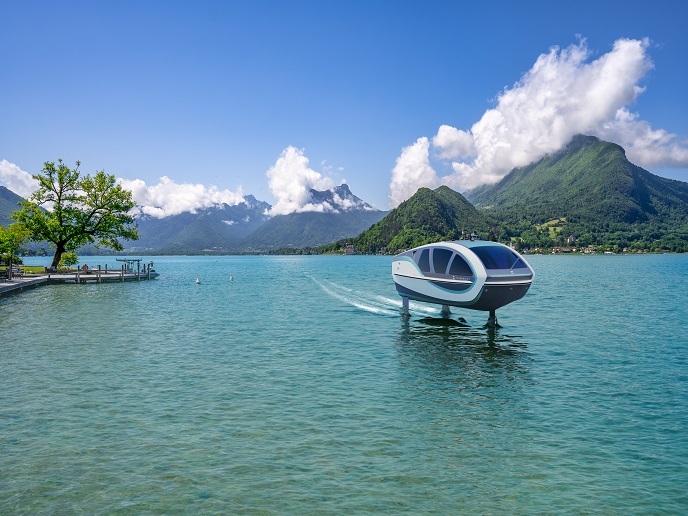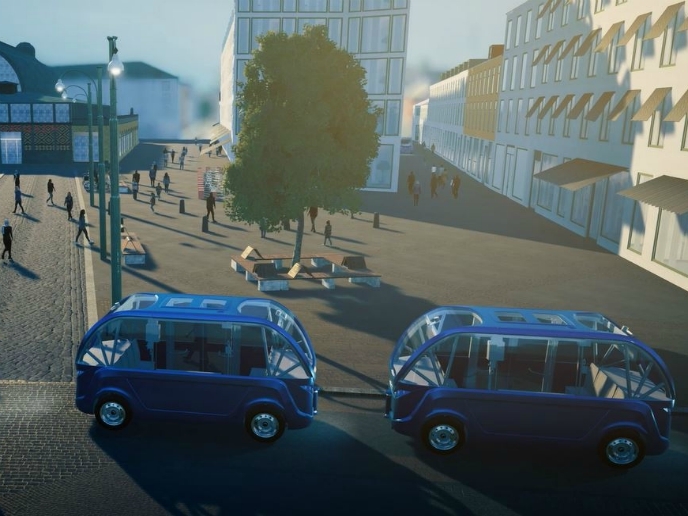Launching of a dreamboat: SeaBubbles
Many cities are congested with traffic and beset by air pollution. However, many conurbations originated near water. Around a third of all locations in urban areas are within a 10-minute walk from a river or canal. The opportunity to develop a water taxi that is ‘Zero Wave, Zero Noise, Zero Emission’ was taken up by the EU-supported Seabubbles(opens in new window) project. “The idea behind SeaBubbles boat is a greener way to use water transport, with a lower carbon footprint,” outlines Baptiste Arribe, strategy director at SeaBubbles in Annecy, France, the host company.
A hybrid battery/hydrogen-powered flying boat
When it comes down to electric hydrofoil boat design, there are two conflicting demands: weight low enough for flight and autonomy in terms of recharging. The best green fuel is hydrogen for a fuel cell(opens in new window). It has the highest energy density per kilogram, and the tank can be refuelled in a few minutes from onshore stations. “Now we have enough energy for a two and a half hour trip,” Arribe notes. Hybridation between the fuel cell and the battery pack gives the best navigation solutions for the pilot. “Acceleration with a fuel cell cannot be executed quickly, so you need a system between the fuel cell and the motor, and that’s the battery,” explains Arribe. “Better still, when the boat is at full speed, the batteries are charging.”
Adapted for flight
SeaBubbles is made of composite fibres, a winning combination of high strength and low weight. The foils are rather like aircraft wings. They are deployed at high speeds, and the boat travels 60 cm above the water surface, a smooth ride even in choppy waters. “The journey is magical and respects delicate ecosystems sensitive to wave movement,” Arribe emphasises. Waves can cause shoreline erosion and disturb aquatic life with increased turbidity. Moreover, as Arribe points out: “When the foils are in action, drag is considerably reduced, and the craft uses 35 % less fuel than the classic boat.” As SeaBubbles decelerates, a sequence of events retracts the foils, and the boat once more travels on the lake/river surface, ready to go into the harbour.
A buoyant future for SeaBubbles
SeaBubbles boats operate in marina areas, rivers and lakes. “Capacity is 12 travellers, and cost per person comes well within the range of a VIP taxi,” notes Arribe. “For this first version, we have identified three types of customers: Transportation companies wanting to deliver a magical experience to their customers, institutions and corporations needing a flagship for communication, and wealthy individuals wanting their own SeaBubbles.” Ten cities have expressed interest in SeaBubbles boats in Spain, Italy, the Netherlands, and Dubai. “We have sold one boat and have many other in the pipeline. We recently signed a partnership with a major actor in the naval industry in the UAE. Our success is also mirrored in staffing levels: today there are 24 and last year only 7.” “Horizon 2020 provided the funding for developing the SeaBubbles prototype, and from there, with French funding, propelled its evolution to the craft we see today,” concludes Arribe. The company intends to work on further drag reduction, energy efficiency and hydrofoil design for the next generation of boats, for VIP and public transportation.







